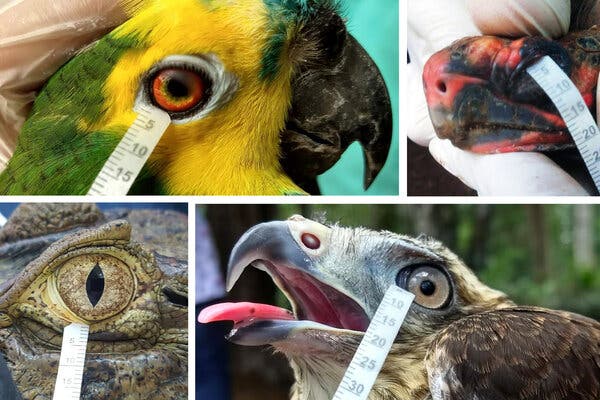
Credit: www.nytimes.com
Introduction
Parrots are known for their vibrant colors, impressive ability to mimic human speech, and their diverse range of vocalizations. However, apart from their incredible intelligence, parrots also display emotions in various ways. One such expression is through crying. In this article, we will explore the emotional side of parrot communication and discuss why parrots cry.
The Crying Behavior of Parrots
When we talk about parrots crying, it’s important to understand that their tears are different from human tears. Unlike humans, parrots don’t produce tears as a result of emotional distress or sadness. The mechanism behind parrot “crying” involves the secretion of excess fluid from the eye glands, which helps in the process of removing dirt, debris, and debris from their eyes.
Their tear ducts serve a similar purpose to our tear ducts. Parrots have a lacrimal gland located near the eye orbit, which secretes fluid that flows down a duct into the eye. If the tear duct becomes blocked or there is excessive fluid production, it can cause the appearance of crying in parrots.

Credit: www.amazon.com
Reasons Why Parrots Cry
1. Irritation and Allergies:
Parrots can cry due to slight irritations or allergies in their eyes, just like humans. Dust, allergens, or foreign objects can cause discomfort in their eyes, leading to the secretion of tears.
2. Eye Infections or Injuries:
If a parrot develops an eye infection or sustains an injury to the eye, it may lead to excessive tear production. In such cases, crying can be an indication of pain or discomfort.
3. Stress or Anxiety:
Parrots are highly sensitive creatures, and they can experience stress or anxiety due to various factors such as changes in their environment, lack of social interaction, or the absence of a trusted companion. These emotional states can cause increased tear production.
4. Hormonal Changes:
During certain periods, such as breeding season or hormonal fluctuations, parrots may exhibit increased tear production. This can be attributed to the changes happening within their bodies.
How to Address Parrot Crying
If your parrot is displaying excessive tear production or signs of distress, it is essential to identify the underlying cause and take appropriate action. Here are some steps you can follow:
- Consult a Veterinarian:
- Maintain a Clean Environment:
- Provide Mental Stimulation:
- Address Hormonal Fluctuations:
If you notice prolonged or persistent crying in your parrot, it is advisable to seek professional advice from an avian veterinarian. They can examine your parrot, identify any underlying health issues, and provide the necessary treatment.
Ensure that your parrot’s living space is clean and free from any irritants that could cause eye irritation or allergies. Regularly clean the enclosure, toys, and perches to prevent the build-up of dust or debris.
Ensure your parrot has plenty of mental stimulation to reduce stress and anxiety. Provide a variety of toys, engage in regular training sessions, and spend quality time interacting with your feathered friend.
If hormonal changes are causing excessive tear production, consult with an avian behaviorist who can provide guidance on managing your parrot’s behavior during these periods.
Frequently Asked Questions On Parrots Cry : The Emotional Power Of Parrot Tears
Can Parrots Cry Tears Like Humans?
No, parrots cannot cry tears like humans. However, they can express their emotions through vocalizations and body language.
How Do Parrots Show Their Emotions?
Parrots show their emotions by using various means such as vocalizations, body language, and feather fluffing. They can also react with excitement or dismay in certain situations.
Are Parrots Capable Of Feeling Happiness?
Yes, parrots are capable of feeling happiness. They can exhibit signs of joy such as singing, playing, and engaging in social interactions with their owners.
Do Parrots Cry When They Are Sad?
Although parrots do not produce tears when they are sad, they can display signs of distress and unhappiness through their behavior and vocalizations.
Conclusion
Crying in parrots is not indicative of emotional distress or sorrow like in humans. Instead, it is a physiological response to various factors such as eye irritation, infections, stress, or hormonal changes. Understanding the reasons behind their tears can help us address their needs and ensure their well-being. If you have concerns about your parrot’s crying, always consult with a professional to provide the proper care and attention your feathered companion deserves.

